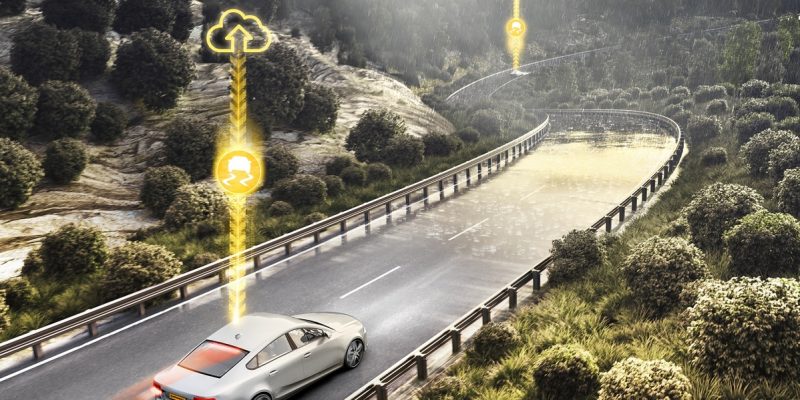Driverless vehicles will, ultimately, be able to download new ‘brains’ from the cloud and 5G connectivity will hold to key to that capability.
That’s the view of Hemant Sikaria, co-founder and CEO of software specialist in remote vehicle data handling, Sibros. He sees this as being a vital capability if AVs are ever to match the speed of problem solving achieved by the human driver. Sikaria explained: “If you have a truck driver today and the vehicle runs over an object, the truck driver can stop, get out and look under the vehicle. There is no way, even with enough proper sensors, you could figure out exactly what the damage may be and then assess whether you should continue driving or call a repair service.”
The ability to quickly assess a vehicle’s options will require machine learning to reach levels not yet achievable. He said: “So, there are things of that nature that will continue to exist for quite some time. At first you have to assess the information then decide what to do with that. So, as more of these scenarios happen, and the data is recorded, there will be some human intervention to figure out what is the right path. However, that will then get built into the algorithms in the vehicles so the machine learning part of this might improve the data to the cloud, improve the algorithm based on the data you’ve collected from the vehicle. With data from hundreds of thousands of vehicles in the cloud, you can push that back to the car which still functions as it should but sort of gets a new version of its brain every now and then.”
5G Role
5G connectivity will be crucial in this role, says Sikaria, because of its ability to be predictable in the process of exchanging data with a remote storage facility. He explained: “One big thing that 5G does differently from 4G is that it makes the timing predictable. So, it is not how long it takes to get a response from the cloud or from the backend, it’s about predicting how long it will take every single time. It’s being able to say, ‘If I make that request it’s going to take me about 25 seconds’, hypothetically speaking, versus right now with 4G, it could be the response comes back in a single second or come back in 60 seconds. That is why 5G is more interesting and attractive to automakers.”
However, Sikaria does not see this situation anytime soon. He said: “Where we are right now is not where the critical functions are being moved to the cloud right now or even planned to be moved in the next year or so. There are a few reasons why the technology and the infrastructure are not ready for it.”
Safe and robust
He said the car must maintain its siloed approach for the time being because automakers have to provide a safe, proven platform to meet both consumer and regulatory needs. “Beyond that the car is now, either by regulation or other means, always meant to be self securing. By that I mean it will never execute a command that has been pushed down from the cloud that is not safe.
“There will be more regulation that will be required as companies understand what this means and policies improve. As an example, we have been working with a company that has a cloud tele-operator. What does this person do? Say you are on the streets of San Francisco and there are only two lanes, one in each direction, and there is a truck parked unloading on you lane. A typical human driver would try to look around the truck and if there is no car approaching, go to overtake. Yet, the computer is programmed not to break any laws and so the tele-operator is there who gets the request that the car is stuck and the tele-operator then gives the car points on the map telling it to enter the other lane, travel say 100 feet then rejoin your lane.
“The vehicle doesn’t blindly just follow that but says ‘now let me look at my surroundings. When there is no car coming, when there are no pedestrians, then I can follow this order’. That is the level of function we are seeing in the cloud right now and not the car pressing the brakes because it spots a pedestrian on the road. I don’t see that level of functionality being moved to the cloud or outside of the vehicle in the near future.”
— Paul Myles is a seasoned automotive journalist based in London. Follow him on Twitter @Paulmyles_
Source: https://www.tu-auto.com
CUT COTS OF THE FLEET WITH OUR AUDIT PROGRAM
The audit is a key tool to know the overall status and provide the analysis, the assessment, the advice, the suggestions and the actions to take in order to cut costs and increase the efficiency and efficacy of the fleet. We propose the following fleet management audit.




